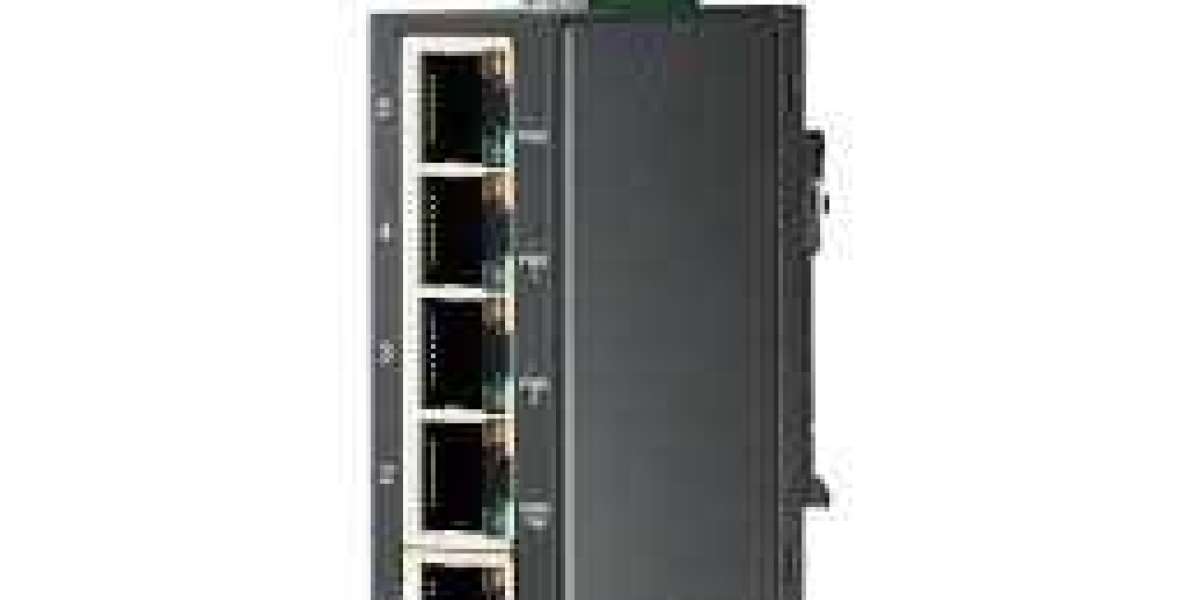Are you looking to power and network your industrial devices without the hassle of running separate cables? Enter PoE switches. But with so many options out there, it can be overwhelming to choose the right one for your specific needs. That's why we've compiled The Ultimate Guide to Industrial PoE Switch – a comprehensive resource that covers everything from what PoE is and how it works, to key considerations when selecting an industrial PoE switch. Whether you're a seasoned IT professional or just starting out in the industry, this guide has got you covered. So sit back, relax, and let's dive into the world of industrial PoE switches!
What is an industrial PoE switch?
An industrial PoE switch is a Power over Ethernet (PoE) device that is designed to be used in industrial applications. These switches are typically ruggedized and have features that make them resistant to shock, vibration, and extreme temperatures. Industrial PoE switches can also provide PoE power to devices such as IP cameras, VoIP phones, and Wi-Fi access points.
The benefits of an industrial PoE switch
As the world of business increasingly moves towards a digital infrastructure, the need for reliable and effective networking solutions has never been greater. An industrial PoE switch is a specialized type of network switch that is designed to be used in harsh environments and industrial settings. While there are many different types of PoE switches on the market, industrial PoE switches are specifically designed to withstand the rigors of an industrial setting and provide a high level of performance and reliability.
There are many benefits to using an industrial PoE switch in your business. One of the main benefits is that it can help you save money on your energy bill. By using Power over Ethernet (PoE) technology, you can deliver both data and power to your devices over one single cable. This can help you reduce the number of cables you need to install, which can save you money on installation costs. Additionally, it can also help you save on energy costs because PoE technology is up to 80% more efficient than traditional AC power.
Another benefit of using an industrial PoE switch is that it can improve your network's reliability. Industrial PoE switches are designed to operate in harsh environments and conditions. They are built with ruggedized components that can withstand temperature extremes, shock, vibration, and electromagnetic interference. This makes them ideal for use in industrial settings where uptime is critical. Additionally, many industrial PoE switches come with redundant power supplies and failover capabilities to further improve reliability.
Finally, an industrial
The different types of industrial PoE switches
In the market for an industrial PoE switch but not sure which one is right for your needs? This guide will help you understand the different types of industrial PoE switches and their features so that you can make an informed decision.
The first type of industrial PoE switch is the managed switch. Managed switches offer more control and flexibility than unmanaged switches, and are ideal for network administrators who need granular control over their network. Managed switches come with a variety of features, such as VLAN support, Quality of Service (QoS), and port mirroring.
The second type of industrial PoE switch is the unmanaged switch. Unmanaged switches are easier to set up and use than managed switches, and are ideal for small businesses or home users who don't need advanced features. Unmanaged switches typically have a fixed number of ports and cannot be expanded.
The third type of industrial PoE switch is thePoE+ switch. PoE+ switches provide power over Ethernet to devices that require it, such as VoIP phones or IP cameras. PoE+ switches come in both managed and unmanaged varieties.
Finally, there are hybrid PoE switches that combine the features of both managed and unmanaged switches. Hybrid PoE switches offer the best of both worlds, giving you the flexibility of a managed switch with the simplicity of an unmanaged switch. Hybrid PoE switches are ideal for small-to-medium sized business networks.
How to choose the right industrial PoE switch for your needs
It can be difficult to determine which industrial PoE switch is right for your needs. There are a few things you should keep in mind when making your decision.
First, consider the environment in which the switch will be used. Will it be located in a dusty or wet area? If so, you'll need a switch that can withstand those conditions.
Second, think about the type of devices that will be connected to the switch. Do you need a switch that can handle high data speeds? Or do you just need a basic switch for connecting devices like IP cameras and VoIP phones?
Third, consider the future needs of your network. Will you be adding more devices in the future? If so, make sure to choose a switch that can accommodate future expansion.
Finally, don't forget to factor in cost. Industrial PoE switches can vary widely in price, so be sure to set a budget before making your final decision.
Industrial PoE switch installation and troubleshooting tips
Installing an industrial PoE switch can be a daunting task, but with our tips you'll be up and running in no time! We'll walk you through the basics of installation, as well as some troubleshooting tips in case you run into any issues.
Before you begin, make sure you have all the necessary equipment. You'll need a power drill, screwdriver, Ethernet cable, andPoE injector or midspan. Once you have everything assembled, follow these steps:
1. Drill two holes in the wall or surface where you'll be mounting the switch. These should be about six inches apart and big enough to fit the anchors that come with your switch.
2. Insert the anchors into the holes and screw them in until they're tight.
3. Hang the switch on the anchors using the provided hardware.
4. Connect the Ethernet cable from your router or modem to the "WAN" port on the back of the switch.
5. Connect your devices (computers, IP cameras, VoIP phones, etc.) to one of the remaining ports on the back ofthe switch using Ethernet cables. Make sure to connect each device to a different port!
6. If your devices are not powered by PoE, plug them into a power outlet now.
7 If everything is plugged in and turned on, check that all your devices are receiving power and are able to connectto your network correctly.








